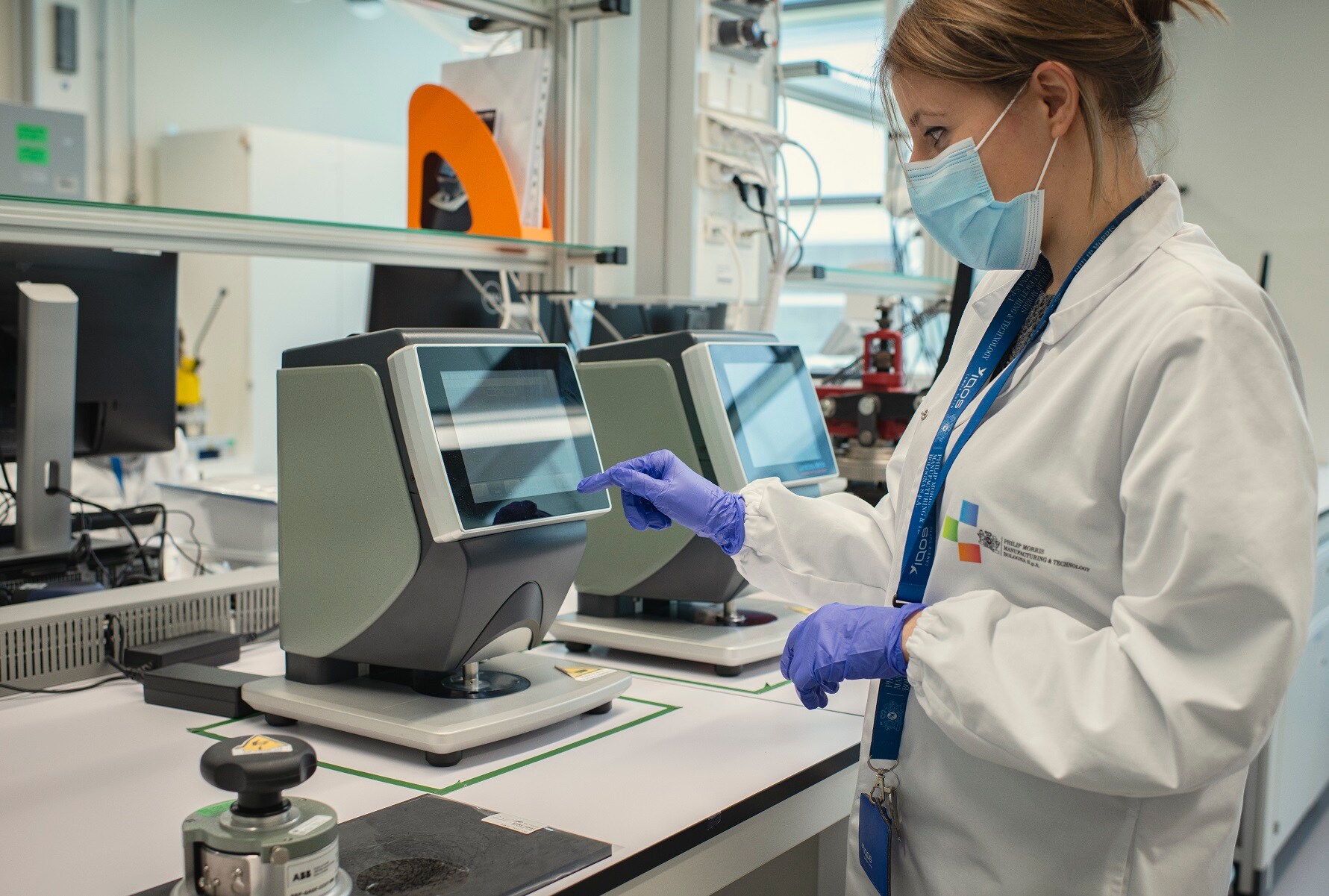What is nicotine?
Nicotine is an alkaloid that occurs naturally in the tobacco plant and other plants in the Solanaceae family, at much lower levels. Nicotine is extracted from tobacco for use in nicotine replacement therapy (NRT) products, the liquids used for e-cigarettes, and other nontobacco nicotine products. It is also possible to produce synthetic nicotine. While this process is relatively costly, an increasing number of products on the market (e-liquids and nicotine pouches) contain synthetic nicotine. All our smoke-free products currently include tobacco-derived nicotine.
What is the history of nicotine use?
People have been consuming nicotine (through tobacco) for thousands of years, with the prevalence varying by culture, time, geography, and gender. The earliest evidence of nicotine (tobacco) consumption comes from the early inhabitants of North America’s desert west approximately 12,300 years ago.1 European sailors and settlers brought tobacco to Europe in the early 1500s.2 In the late 1800s, the cigarette-rolling machine was invented and commercial cigarettes became widespread.
Why is nicotine so often conflated with smoking?
Since smoking has been the most prevalent form of nicotine uptake for millennia, nicotine, smoking, and tobacco use can be difficult to separate in people’s minds. However, the effects of nicotine vary by product (depending on the delivery mechanism and what else is delivered besides the nicotine). Therefore, the effects of nicotine must be decoupled from the effects of the product.
External independent surveys indicate prevalent misunderstandings regarding the impacts of nicotine among smokers and healthcare providers. National data from the U.K. and the U.S. indicate that misconceptions about nicotine are widespread among adults who smoke, with a significant segment of the population erroneously thinking that nicotine is the cause of smoking-related cancers. Misperceptions about nicotine also persist among healthcare professionals, with many incorrectly attributing smoking-related diseases to nicotine itself.3,4,5
The unfortunate outcome of these misperceptions for adults who smoke is that they tend to perceive nicotine to be as harmful to health as cigarette smoking and therefore may be dissuaded from switching to nicotine-containing products that do not combust. 6
Furthermore, the misperceptions in healthcare professionals around the health effects of nicotine may prevent them from being able to differentiate the health effects of smoking from nicotine itself.
Importance and risks of nicotine
The presence of nicotine in smoke-free products is an important factor among others, including ritual, sensory and taste, to successfully move adults away from cigarettes through the adoption of smoke-free products.7
Many people who smoke cigarettes indicate that they do so for the perceived benefits, which include enjoyment, stress management, and relaxation. Additionally, some studies report that nicotine can enhance cognitive processes like improving attention, memory, and fine motor function.
As an agonist of nicotinic acetylcholine receptors, nicotine elicits a variety of transient cardiovascular effects such as increased heart rate and blood pressure.
Sustained nicotine use can induce changes in the brain’s reward and stress systems, leading to withdrawal symptoms, although the effects are transitory and reversible once people quit and successfully abstain from using tobacco and nicotine products.
It is well understood that nicotine is addictive and not risk-free. However, while it can be difficult for some, anyone can quit tobacco and nicotine altogether with sufficient motivation.
Some studies have found that nicotine may have adverse effects on fetal development such as low birth weight.
For all these reasons, some populations should avoid nicotine-containing products, such as minors, and women who are pregnant or breastfeeding, as well as people with pre-existing conditions including heart disease, high blood pressure, diabetes, or epilepsy.
Achieving the goal of phasing out cigarettes will require a debate informed by facts and science on the health effects of smoke-free products and nicotine itself. As of today, much of our understanding of the importance and risks of nicotine is confounded
with smoking. Therefore, as more and more new products emerge that separate nicotine from some or all of the aspects of the smoking ritual, much more research is needed to fully understand these new products as well as the role of nicotine itself.
Future of nicotine
A better understanding of the health impacts of nicotine, separate from smoking, is needed. As new nicotine-containing products continue to emerge that separate nicotine from some or all of the aspects of the smoking ritual, more research will be important to fully understand these new products and the effects of nicotine itself.
We know a lot about nicotine, but much of it is confounded with the effects of cigarette smoke. People have a lot of questions about nicotine, including its long-term effects, separate from the effects of smoking.
Steps should be taken by academic institutions and industry alike to fully understand the short- and long-term impacts of nicotine use. We plan to contribute to this understanding by conducting and publishing dedicated research focusing on understanding the effects of nicotine.
How harmful is nicotine?
While addictive and not completely harmless, nicotine itself is considered low risk in healthy adults, particularly when it is compared to smoking.
Nicotine harms are product dependent (i.e., factors such as the amount of nicotine, route of administration, and rate of delivery will influence this) and vary based on the individual characteristics of the person consuming it.
Some populations should avoid nicotine-containing products, such as underage people and women who are pregnant or breastfeeding, as some studies have found that nicotine may have adverse effects on fetal development such as low birth weight. People with pre-existing diseases or conditions (e.g., heart disease, high blood pressure, diabetes, or epilepsy) should also avoid nicotine consumption.
Although cancer is a complex and multifactorial process, research shows that nicotine is not classified as a carcinogen by health bodies like the International Agency for Research on Cancer and the U.S. FDA.7,8 While there is research ongoing into nicotine’s role in cancer promotion separate from cigarette smoke, today, there is insufficient evidence that nicotine contributes to or promotes the development of cancer.
While nicotine is addictive and not risk-free, nicotine is not the primary cause of smoking-related diseases. It is the extended exposure to the toxic by-products of combustion produced in high levels when a cigarette is lit that results in smoking-related diseases such as cancer, respiratory illnesses, and cardiovascular conditions.
What are the effects of nicotine?
Many people who consume nicotine indicate that they do so for the perceived benefits, which include enjoyment, stress management, and relaxation. Additionally, there is evidence that nicotine can enhance cognitive processes like improving attention, memory, and fine motor function.9
As an agonist of nicotinic acetylcholine receptors, nicotine also elicits a variety of transient cardiovascular effects such as increased heart rate and blood pressure.
Sustained nicotine use can induce changes in the brain’s reward and stress systems, although the effects are transitory and reversible once people quit and successfully abstain from using tobacco and nicotine products.
It is well understood that nicotine has reinforcing effects and as such can lead to addiction, but nicotine is not intoxicating or functionally impairing. The likelihood that nicotine use will lead to addiction depends on multiple factors around the product (including mode of use, amount, and rate and patterns of delivery), the environment around the product (like availability, price, and regulations), as well as the biopsychosocial differences between the users. While it can be difficult for some, anyone can quit tobacco and nicotine altogether with sufficient motivation.
How can nicotine contribute to making cigarettes obsolete?
Achieving the goal of phasing out cigarettes requires discussion informed by facts and science on the health effects of smoke-free products and nicotine itself.
Availability of less-harmful nicotine containing products that do not require combustion can help smokers switch fully to these alternatives, thus driving cigarette obsolescence.
Could nicotine have a therapeutic application?
The scientific community continues to explore ways in which nicotine and other alkaloids present in the tobacco plant can be isolated and potentially used as therapeutic compounds.10 For instance, scientists are studying nicotine as a possible active ingredient in pharmaceutical applications for treating schizophrenia, depression, anxiety, and other disorders.11
Scientists are also examining the potential effects of nicotine on treating conditions such as Tourette’s, Alzheimer’s, Parkinson’s, attention deficit hyperactivity disorder (ADHD), and other diseases.12 Cellular, animal, and human studies have yielded some promising results, yet the evidence is not conclusive, and nicotine’s addictiveness could be a limiting adverse effect for its development as a therapeutic compound.13
The U.S. National Institutes of Health funded a multi-center study designed to explore whether nicotine patches (used traditionally as NRT, to aid cessation) improve memory and functioning in patients with mild cognitive impairment, compared to placebo in 380 subjects exposed for two years, the results of which should become available in 2026.14
This online content about our Integrated Report should be read in conjunction with PMI’s Integrated Report 2024. This report includes metrics that are subject to uncertainties due to inherent limitations in the nature and methods for data collection and measurement. The precision of different collection and measurement techniques may also vary. This report includes data or information obtained from external sources or third parties. Unless otherwise indicated, the data contained herein cover our operations worldwide for the full calendar year 2024 or reflect the status as of December 31, 2024. Where not specified, data comes from PMI financials, nonfinancials, or estimates.
Unless explicitly stated, the data, information, and aspirations in this report do not incorporate PMI’s wellness and healthcare business, Aspeya. Regarding the Swedish Match acquisition, completed late 2022, unless otherwise indicated, this report includes information pertaining to its sustainability performance. Please also refer to "This report at a glance" on page 2 of the PMI’s Integrated Report 2024 for more information. Aspirational targets and goals do not constitute financial projections, and achievement of future results is subject to risks, uncertainties and inaccurate assumptions, as outlined in our forward-looking and cautionary statements on page 206. In PMI’s Integrated Report 2024 and in related communications, the terms “materiality,” “material,” and similar terms are defined in the referenced sustainability standards and are not meant to correspond to the concept of materiality under the U.S. securities laws and/or disclosures required by the U.S. Securities and Exchange Commission.


